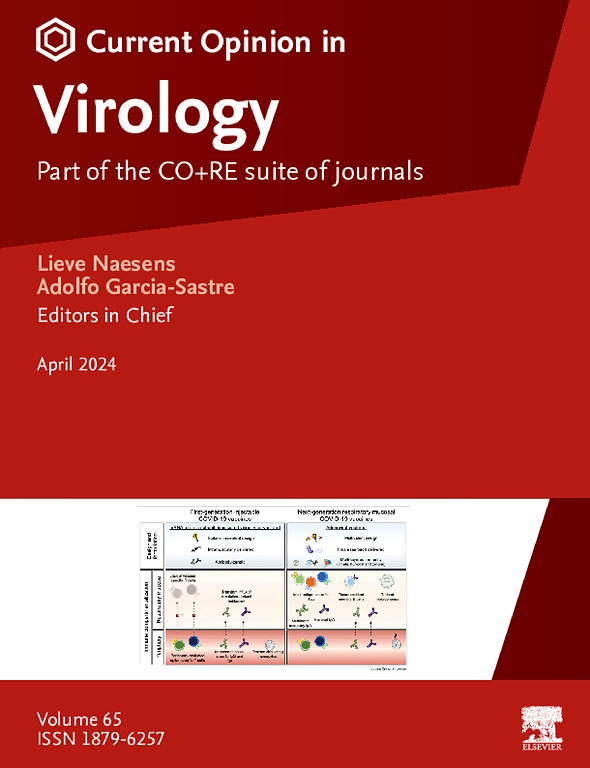通过使用有机体推进人畜共患呼吸道病毒研究。
IF 5.1
2区 医学
Q1 VIROLOGY
引用次数: 0
摘要
具有在人类呼吸道复制能力的人畜共患病病毒对公共健康构成威胁。类器官是代表特定器官或组织的极具代表性的多细胞模型,有助于我们了解人畜共患病病毒的致病机理、致病性、传播性和蓄积循环动态。类器官研究有助于快速选择抗病毒疗法,识别潜在的病毒库物种和中间宿主,并为选择合适的实验动物模型提供信息。我们综述了利用源自人类和动物多个器官的类器官模型来研究引起呼吸道疾病的新兴人畜共患病病毒的威胁。本文章由计算机程序翻译,如有差异,请以英文原文为准。
Advancing zoonotic respiratory virus research through the use of organoids
Zoonotic viruses with the ability to replicate in the human respiratory tract pose a threat to public health. Organoids, which are highly representative, multicellular models representing specific organs or tissues, can aid in our understanding of the pathogenesis, pathogenicity, transmissibility, and reservoir circulation dynamics of zoonotic viruses. Organoid studies can facilitate the rapid selection of antiviral therapies identification of potential reservoir species and intermediate hosts, and inform the selection of suitable laboratory animal models. We review the use of human- and animal-derived organoid models from multiple organs to investigate the threat of emerging zoonotic viruses that cause respiratory disease.
求助全文
通过发布文献求助,成功后即可免费获取论文全文。
去求助
来源期刊

Current opinion in virology
VIROLOGY-
CiteScore
11.80
自引率
5.10%
发文量
76
审稿时长
83 days
期刊介绍:
Current Opinion in Virology (COVIRO) is a systematic review journal that aims to provide specialists with a unique and educational platform to keep up to date with the expanding volume of information published in the field of virology. It publishes 6 issues per year covering the following 11 sections, each of which is reviewed once a year: Emerging viruses: interspecies transmission; Viral immunology; Viral pathogenesis; Preventive and therapeutic vaccines; Antiviral strategies; Virus structure and expression; Animal models for viral diseases; Engineering for viral resistance; Viruses and cancer; Virus vector interactions. There is also a section that changes every year to reflect hot topics in the field.
 求助内容:
求助内容: 应助结果提醒方式:
应助结果提醒方式:


